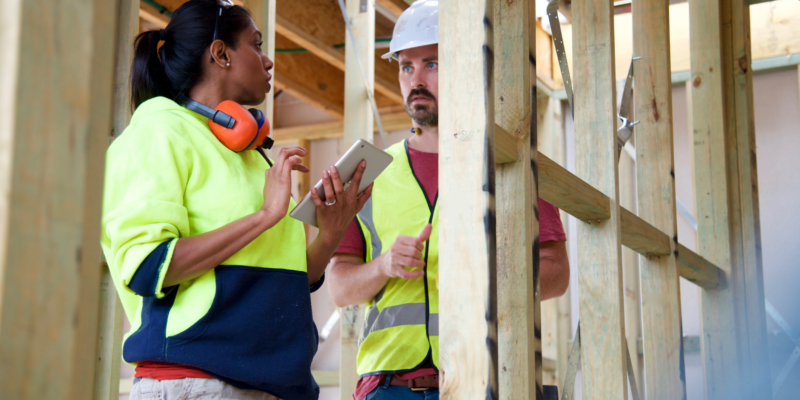As students across the country return to school, you may have someone in your life considering going into the construction industry. Construction is a dynamic and rewarding field that offers diverse opportunities, and a long, steady, and rewarding career.
However, with so many directions to go it can be hard to know where to start. That’s why we’ve created this step-by-step guide to get you started in the industry, regardless of your background or experience level.
Explore the Fields
There are lots of different jobs in the construction industry, so you’ll need to take some time to research. Understanding the various sectors (like residential, commercial, civil, and industrial construction) and reflecting on your interests and skills will help you determine which area aligns best with your goals and abilities.
Get Educated
Depending on your chosen career path, you may need formal education or training. Here are a few options:
- Trade Schools: Consider enrolling in a trade school to learn specific skills like carpentry, plumbing, electrical work, or masonry. Google “trade schools near me” and you’ll see what options you have.
- Apprenticeships: Apprenticeships offer hands-on training and often lead to well-paying jobs. You’ll work under the guidance of experienced professionals while earning a salary. Ask around with local construction companies to see what they offer.
- College Degrees: If you’re interested in construction management, engineering, or architecture, you can pursue a relevant degree program at a college or university. Since this can be expensive, research what kind of scholarships or assistance may be available. Your school website or scholarships.com are great places to start.
- Certifications: Many positions, such as crane operators or safety managers, require certification rather than a full degree. Investigate the certifications needed for your chosen career path and plan accordingly.
Start Networking
It’s not what you know, but who you know! Building a strong network, attending industry events, joining professional organizations, and connecting with experienced individuals are all great ways to find job opportunities and valuable mentorship.
Gain Experience
Start by gaining hands-on experience. Starting as a laborer on construction sites will provide you with practical knowledge and a chance to learn from experienced workers.
Practice Safety First
Safety is paramount in construction. Familiarize yourself with safety regulations and procedures, and consider taking courses in construction safety to enhance your qualifications. This will let employers know that you take your future seriously.
Create a Resume
Craft a compelling resume that highlights your relevant skills and experience. When you apply for jobs or apprenticeships, prepare for interviews by researching the company and practicing common interview questions.
Start Job Searching
Remember when we talked about networking? When you’re ready to start working, the best place to start is by asking for referrals from your network of mentors and contacts. If that doesn’t work, look for jobs on construction job boards, company websites, and local trade unions.
Get the Right Tools
Depending on your role, you may need to invest in your own tools and equipment. Start with the basics and gradually expand your toolkit as you gain experience.
Never Stop Learning
As you progress in your career, consider pursuing additional certifications or advanced degrees. This can open up higher-paying positions and leadership roles down the line. Talk to your managers, too; companies will often pay for additional training!
Be Dedicated
Regardless of what sector you choose, a strong work ethic and the ability to work well in a team are the most important traits you can bring to any project. Construction projects are often collaborative efforts, and your attitude and professionalism will be noticed and appreciated. Being comfortable in different climates, going up and down ladders, and working long hours will help you excel in construction.
The construction industry offers a wide range of opportunities for individuals with varying backgrounds and interests. Whether you’re swinging a hammer or managing a project, you’re helping to build the future, one brick at a time.










